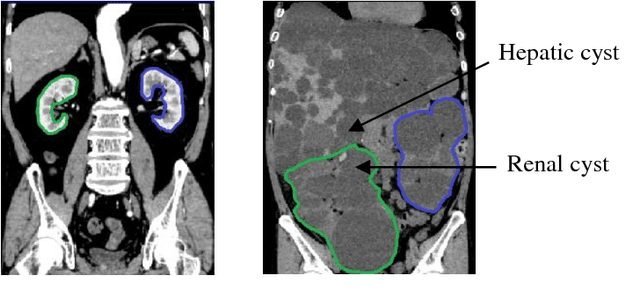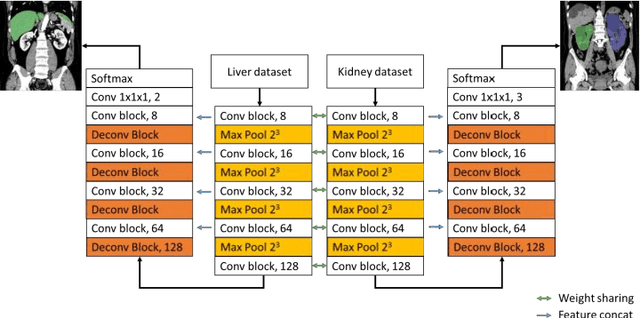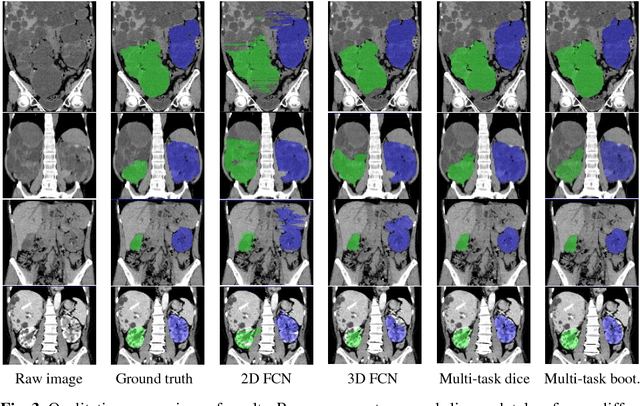Deepak Keshwani
TopNet: Topology Preserving Metric Learning for Vessel Tree Reconstruction and Labelling
Sep 18, 2020



Abstract:Reconstructing Portal Vein and Hepatic Vein trees from contrast enhanced abdominal CT scans is a prerequisite for preoperative liver surgery simulation. Existing deep learning based methods treat vascular tree reconstruction as a semantic segmentation problem. However, vessels such as hepatic and portal vein look very similar locally and need to be traced to their source for robust label assignment. Therefore, semantic segmentation by looking at local 3D patch results in noisy misclassifications. To tackle this, we propose a novel multi-task deep learning architecture for vessel tree reconstruction. The network architecture simultaneously solves the task of detecting voxels on vascular centerlines (i.e. nodes) and estimates connectivity between center-voxels (edges) in the tree structure to be reconstructed. Further, we propose a novel connectivity metric which considers both inter-class distance and intra-class topological distance between center-voxel pairs. Vascular trees are reconstructed starting from the vessel source using the learned connectivity metric using the shortest path tree algorithm. A thorough evaluation on public IRCAD dataset shows that the proposed method considerably outperforms existing semantic segmentation based methods. To the best of our knowledge, this is the first deep learning based approach which learns multi-label tree structure connectivity from images.
Computation of Total Kidney Volume from CT images in Autosomal Dominant Polycystic Kidney Disease using Multi-Task 3D Convolutional Neural Networks
Sep 07, 2018



Abstract:Autosomal Dominant Polycystic Kidney Disease (ADPKD) characterized by progressive growth of renal cysts is the most prevalent and potentially lethal monogenic renal disease, affecting one in every 500-100 people. Total Kidney Volume (TKV) and its growth computed from Computed Tomography images has been accepted as an essential prognostic marker for renal function loss. Due to large variation in shape and size of kidney in ADPKD, existing methods to compute TKV (i.e. to segment ADKP) including those based on 2D convolutional neural networks are not accurate enough to be directly useful in clinical practice. In this work, we propose multi-task 3D Convolutional Neural Networks to segment ADPK and achieve a mean DICE score of 0.95 and mean absolute percentage TKV error of 3.86. Additionally, to solve the challenge of class imbalance, we propose to simply bootstrap cross entropy loss and compare results with recently prevalent dice loss in medical image segmentation community.
 Add to Chrome
Add to Chrome Add to Firefox
Add to Firefox Add to Edge
Add to Edge